























So, in the interests of my own sanity (and I suspect yours as well), I am going to completely ignore the ‘elephant in the room’ pertaining to Rome burning around us and not mention anything! Please don’t take that as ignorance - I think we all just need to take the light reliefs where we can currently!!!
Here at Voice Magazines, we’ve been on a bit of a roadshow!! When I started this magazine 12yrs ago now, it was all about shopping local and supporting the small local businesses, who very often have far more outgoings than incomings financially speaking, especially in the early days! These businesses don’t have huge budgets, so we wanted to give them a ‘Voice’ to get their message out.
The real threat of losing the high street altogether is more real today than at any other time and whilst some people may see no issue with that, it is a life line for so many people in so many ways from employment to accessibility (not everyone has the internet or the ability to use it) to company (it might be the only people that someone sees that day) to what happens to the properties and much, much more. Personally speaking, I love browsing a high street and finding little hidden gems or impulsive items that you think ‘Ooooo, Caron would love that!’, you can’t do that on the internet!
Apart from all of that, it is local business that keeps local communities and small areas going. The better our high streets, the more the money flows around

your area to support the local sports team or donate to the local charity for example. So, let’s all pull together this year and try and support our high streets – it’s fair to say that they’ve had a rough run over the last few years and now is the time for the community to support them! Bezos doesn’t need to be any richer but the local shopkeepers need to survive this difficult time, so please turn to our high street feature and join the ‘shop local’ revolution.
In other news, as we were out and about this month, you can also read all about our foot scan experience at another grassroots, small, Derbyshire based business who do fantastically on the global footwear platform - Rockfall. I may have mentioned earlier this year about a small plantar injury! Anyway, my crikey, that footscanner machine was amazing, I could see where my arch has fallen, and the physio kept saying about getting a supportive insole but I thought she was probably just being overly cautious! Having tried it, insoles are the future!! Only issue is, I need to make sure that they can be inserted into my *small* shoe collection!!
#fingerscrossed
See you next month when who knows what alternative reality we will be in then? Perhaps Santa will start wearing blue!!!
PS: Don’t forget to mention the ‘Voice’ when you use any of the companies in this magazine
As
Trees nurture and sustain us and the planet we call home in so many ways. From the very air we breathe, to the houses we live in, the furniture we use, and even (some of) the plastic necessary for 21st Century life - trees are essential to our existence.
Without woodlands and forests, land loses integrity and stability. Erosion by wind and water is more extreme without trees acting as wind blocks, and their roots soaking up rainfall. Just look at what happens when forests are cleared in places like the Amazon - biodiversity drops, the soil dries out, there is less rainfall (the Amazon rainforest actually create their own rainfall - did you know that?) and the result is often wildfires.
Trees also soak up carbon dioxide in the atmosphere, and when present in towns and cities it has been estimated that they can reduce urban temperatures by up to 7°C. So, not only do trees slow global warming by capturing and containing CO², they also help keep our cities cooler in the summer as they lose moisture and their leaves reflect heat (from tarmac and concrete) upwards and away from the ground.
It’s not only we humans that benefit from trees, one mature oak tree (my favourite species) can be home to as many as 500 different kinds of birds, insects, and small animals. Felling a great old oak will not just kill the tree itself, but will deprive hundreds of other living creatures of their home. Even trees that have died in situ continue to provide both habitats and food sources for other creatures.
In a nutshell (acorn cup if you prefer) we NEED trees.
I’m going to chuck in a bit of history now… William the Conqueror took ownership of many of the forests in England, granting hunting rights only to the select few. These woodlands were known as “the Royal Forests” and mere mortals, even land owners, were restricted in their use of forest lands so that the, ahem…”great and good” could “enjoy” a spot of hunting every so often!
These rights were not overturned until The Forest Charter, 1217. Eight hundred years later, in 2017, a new Charter for Trees, Woods and People was launched with the following objectives:
• Sustain landscapes rich in wildlife
• Plant for the future
• Celebrate the power of trees to inspire
• Grow forests of opportunity and innovation
• Protect irreplaceable trees and woods
• Plan greener local landscapes
• Recover health, hope and wellbeing with the help of trees
• Make trees accessible to all
• Combat the threats to our habitats
• Strengthen our landscapes with trees
What are YOU going to do in National Tree Week to aid these objectives?





























Across
7 Kidney stuff is hard to learn (5)

11 Thing is, it’s
of a
(5)
13 A mark taken as effect of actions (5)
16 Chine set up in alcove (5)
Down
2 Vase produced in blast-furnace (3)
4 Greeting, if included, is a sound system (2-2)

10 It’s an approach to earn, roughly (4)







12 Disgusting? Bit of a blast! (4)
15 Strung out axis (shorter for a cab) (4)
17 Bit of barbecue sauce for the potter, please? (3)






A piece of advice often given to creative writers is to write about what you know. Which is exactly what journalist Robert Peston, has done in his novel The Whistleblower Mr Peston is probably best known for his scoop that Northern Rock and RBS went with begging bowls to the Bank of England at the beginning of the 2008 crash, sparking queues of panicking customers outside the banks. He’s been economics editor for the BBC and had his own weekly politics discussion programme on TV.

So yes, he does know about politics, money and finance - and journalism. Add dodgy dealings at the highest level and the mysterious death of the hero’s sister, a high flying Treasury official and you’ve got a fast paced political thriller which grabs your attention and hangs on.
It’s based in the Blair years which greatly adds to the entertainment value for those who remember the heady early days of Cool Britannia. You’ll probably find yourself thinking, I know who that’s meant to be. And there’s plenty of interesting nuggets about the workings of certain kinds of journalists at the top.
Definitely worth a read.











Welcome
on
In 1993, members of the Mansfield Lioness Club came up with a new fundraising initiative for the Hospice. With the help of donations from local companies, the first “Tree of Light” was erected and dressed in the Hospice Grounds, raising an amazing £1840.00.

The Mansfield Lioness Club disbanded after several years and some members decided to continue dedicated fundraising for the Hospice, they became appropriately known as SHINE.
The lighting ceremony has changed considerably over the years, developing from a small group of people attending a chaplain led service at the hospice to a very busy event at Queen Elizabeth ’s School hall and after that at the Eastwood Suite at Portland College. Some years ago we created a Tree of Remembrance which enables sponsors to write a personal message on a tag and attach it to our symbolic tree, which stands in the Hospice reception. This proves very popular with bereaved families.
The tree of Light began as a fundraising event and has raised almost £220,000, however it has become much more. It is a way of remembering those we have loved and lost at a special time of the year. We hope the tree will remain a symbol of light and hope for many years to come and that it continues to bring comfort to us all.
We are very grateful to Collis Engineering who arrange delivery of the tree and erect and dress it for us.
To find out more or to sponsor a light, please contact us by the methods below.
John Eastwood Hospice Trust, Mansfield Road, Sutton in Ashfield, Nottinghamshire, NG17 4HJ Web: www.johneastwoodhospice.org.uk Email: contact@johneastwoodhospice.org.uk
Tel: 01623 622626


One of the most personal items in our collection is a wooden clothes horse made by Paul’s grandad in the 1930’s. Until recently, it was held together by a stocking made by Brettles of Belper which unfortunately disintegrated and fell off. It is now held together with a piece of twine. This simple item of treasured family history is still used in our house today.


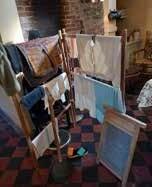
Whenever we bring the clothes horse out to show people during our “All Around the Shire” sessions, many people remember it not just for drying laundry, but when placed on its side and covered with a blanket, as a child’s tent. It is generally agreed that you have not had a proper childhood until you have played in a clothes horse tent.
Last week a 96 year old woman came up to me after our session and said that in Yorkshire, it was called a “Winter Hedge”. This was because for the rest of the year, clothes were dried on hedges outside and it was only in the winter that the “Winter Hedge” was used indoors.

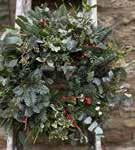


When my parents were first married, mum would dry clothes on washing lines strung on hooks high above the picture rail. My dad, being very tall, would complain about being hit in the face by wet nappies as he walked into the room.
As time went on, they had a ceiling rack with a pulley system, sometimes called a “Sheila Maid” What an invention. Dad was able to walk about without a stoop. Precious memories.
Janet













Method
1. Spray a large non-stick saucepan with low-calorie cooking spray and put over a medium heat. Add the garlic, shallot, leek, carrot, celery and fennel seeds and fry for 10 minutes, adding a little water if anything sticks.
2. Meanwhile, cook the sausages according to the pack instructions and cut each one into 6 pieces.
3. Stir the rice and stock cubes into the veg. Add 700ml boiling water a little at a time – letting the rice absorb each addition
The italian style sausgaes in this dish are the perfect ingredient and add extra flavour as well as leaving you feeling well fed!
Ingredients:
before you add more – and cook for 20 minutes, stirring often.
4. Add the sausages and keep cooking and stirring until the liquid has been absorbed and the rice is cooked to your liking (you might need more water). Remove from the heat and stir in the quark, then scatter over the herbs and season to taste. Serve with salad.
For more information visit www.slimmingworld.co.uk

Serves: 4 Ready in: 50 mins
Low-calorie cooking spray
1 garlic clove, finely chopped
1 shallot, finely chopped
1 small leek, finely chopped
1 medium carrot, finely chopped
1 celery stick, finely chopped
½ tsp fennel seeds, lightly crushed
6 Slimming World Italian-style Sausages

200g dried arborio rice
2 chicken stock cubes, crumbled
3 tbsp plain quark
Chopped fresh chives or parsley, to serve
Syns per serving: FREE








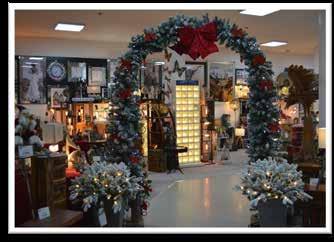



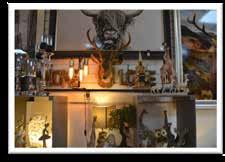
















Black Friday, which is November 25th this year, is one of those American imports I question that we really need. Originally coined to mark the Friday after Thanksgiving when traditionally Americans would start their Christmas shopping.

I delved into the history behind the phrase “Black Friday”, and discovered that the first reference in relation to Thanksgiving was in the early 50s when it related to workers calling in sick the day after the celebrations. Around the same time, the terms “Black Friday” and “Black Saturday” came to be used by the police in Philadelphi to describe the crowds and traffic congestion accompanying the start of the Christmas shopping season.
It took a while for the phrase to gain traction, and it only really became a kind of sales vehicle when an alternative derivation of the meaning was suggested in the 80s. This was that retailers traditionally operated at a financial loss January to November and made their profit during the holiday season, beginning on the day after Thanksgiving. In pre computer accounting days it was usual to use red ink to show negative amounts and black to show positive. Black Friday, under this theory, is the beginning of the period when retailers would no longer be “in the red”.
Many large retailers now try to con us Brits out of our hard earned money by promoting “Black Friday Offers”, and it can be quite tempting to spend cash on what look like great deals…but before you part with your dosh, just check to see if the saving is as great as it claims to be!
Even better, ignore the big retailers altogether during the festive shopping period. Instead concentrate on the high streets of our local towns and villages and spend your money with independent small shops, producers, and makers. They are owned and run by people like you and I who are aiming to make a living for themselves and their families. The money we spend in their shops will not go towards funding the pension of a multi-millionaire at the top of a large faceless corporation.
If you’re not a fan of retail therapy and prefer online shopping, look on the likes of Etsy, Not on the High Street, and even Facebook and Instagram for small shops, creatives, and makers. Many local creators will only be selling online or at local craft fairs and events.

We need to support the people in our local economies. We need to prioritise purchasing from independents, be that in a shop or online. Yes, a multinational may appear cheaper, and with the current state of many of our wallets that is appealing, but big corporations seldom help small towns and villages.
Here’s a challenge for you…keep your pre festive spending in your local area. Buy sustainable products. Limit your purchase of plastic toys in favour of books. And if in doubt, buy a gift voucher from a local shop!













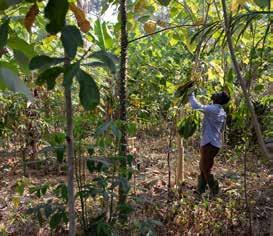

People are often curious about how Fairtrade pricing works and how farmers benefit. It’s not rocket science, we promise, and chocolate is one of the most straightforward ways to demonstrate this.
Chocolate is one of life’s simple pleasures. A pleasure many of us enjoy every day. But sadly, the cocoa industry has been blighted by persistent problems like discrimination, exploitation, deforestation, and low prices which perpetuate poverty for the farmers who grow the cocoa. Imagine you buy a £1 bar of non-Fairtrade chocolate. Of that £1, just six pence goes to the cocoa producer. So, who did you just give 94p to? About 40p went to the chocolate company, 35p to the retailer and the rest to other parts of the supply chain.
When terms of trade don’t work for farmers, it is impossible for them to escape from the cycle of poverty. Seen like this, it’s obvious that giving farmers and workers a better deal is not about asking you to pay a higher price. It’s about giving ensuring more of the money gets to farmers.
The Fairtrade minimum price defines the lowest possible price that a buyer of Fairtrade products must pay the producer. The minimum price is set based on a consultative process with Fairtrade farmers, workers and traders and guarantees that producer groups receive a price which covers what
it costs them to grow their crop. When the market price is higher than the Fairtrade minimum price, the trader must pay the market price.


The Fairtrade Premium is an extra sum of money farmers and workers receive for the sale of their goods that they can invest in projects of their choice, such as new health centres or schools. In 2021, sales of Fairtrade products in the UK generated £25.2 million (€30m) for farmers and workers to invest in their businesses and communities.
The unfair status quo of trade isn’t working. With the increasing problems farmers face due to climate change and the cost of living, it is only going to get worse. It’s time for radical change. To make a difference, you can start by choosing Fairtrade.






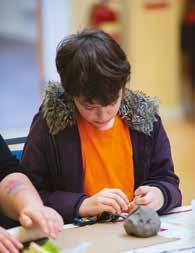

From its establishment after the 1914 – 1918 war, the Earl Haig Fund acquired its poppies from England. 1921: MADAME GUÉRIN. It all started with Madame Guérin’s ‘Inter-Allied Poppy Day’ idea. After taking her idea to Field Marshal Douglas Haig and the British Legion, Madame Guérin’s poppies (made by the widows and orphans/women and children of the devastated areas of France) were distributed on British streets on 11 November 1921 – on the country’s first Poppy Day. Madame Guérin personally paid for the British consignment because the Legion was so poor and was reimbursed after the Armistice Day distribution. www.poppyladymadameguerin.wordpress.com/ remembrance-poppy-timeline-for-great-britain/
In 1926, Countess Haig, the wife of Field Marshal Haig, suggested that a factory, employing those men disabled by war, should be started to make poppies for Scotland.
The suggestion was taken up by Earl Haig’s “Appeal Organisation” and premises, in the form of an old wood-chopping factory in the grounds of Whiteford House, were acquired.


From its early origins in March 1926, of “two workers, a pair of scissors and a piece of paper”,
numbers soon rose to twenty-eight by which time, the bulk of the poppies required for Scotland had been made. And there was a waiting list of 117 men who wished to be employed by the factory. A committee of management under the chairmanship of Colonel William Robertson VC came into being and the project began to expand.
The collecting tin had been allocated to the British Legion’s Earl Shilton branch, Leicestershire and tins were duly stamped accordingly. Along with Anna Guerin’s French-made poppies they were distributed on the Leicestershire streets – the very first Poppy Day in the UK.
During the run up to the end of the decade, the demand for poppies and wreaths was met while, in 1928, the introduction of “stuffed toys and jigsaw puzzles” heralded an expansion of activity into a wide range of hand-crafted goods.
Wreaths were made with locally grown laurel leaves, wax poppy seeds and moss which were gathered by Girl Guides.
Tins such as these are now incredibly rare to find. Made from old tins – quite often paint ones- by the John Fever Iron Works in London. The company no longer exists and ceased trading in 1969.


Please get in touch if you have anything you would like to share about these fascinating gifts. Contact Richard Godley on T: 07854 646 742 E: eastpeakcic@gmail.com
Don’t









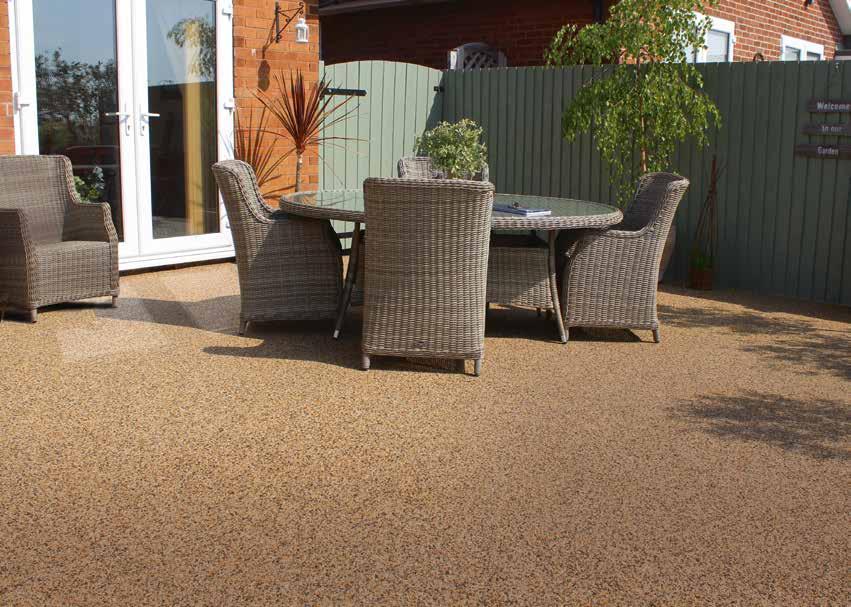




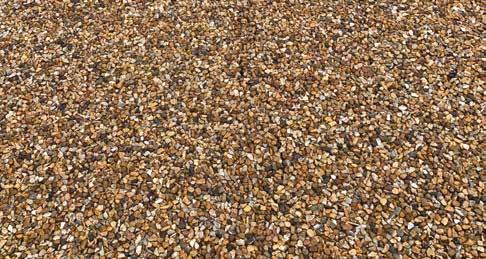







































For thousands of years ceremonies have been held for people to celebrate the winter solstice and the passing of the longest night of the year. Ancient Nordic and Germanic people celebrated the festival of Yule, which lasted over several days. This involved a variety of rituals, feasts, and blessings of the land for the year to come.
Christmas as we know it was barely celebrated in Britain until the time of Queen Victoria. Victoria’s husband Prince Albert introduced some German Christmas traditions. He gave cards and put up trees decorated with candles, ornaments, iced biscuits and stars.

Father Christmas, Santa Claus and St Nicholas are some of the names associated with the gift giver. The original St Nicholas was a Bishop born in Turkey who helped the poor by giving money to those who needed it. Many stories are associated with him. One tells of him secretly dropping a bag of gold down the chimney of a poor family. The gold accidently fell into a stocking pinned by the fire to dry. Could this have been the start of the Christmas stocking we know?
The traditional bright red outfit we recognise today is rumoured to have emerged from a 1930s advertising campaign by Coca Cola, but maybe St Nicholas in his Bishop’s red outfit had more to do with it.
Crackers filled with gifts and paper hats are meant to represent the crowns of the three wise men. On Christmas Day we give presents, symbolic of the gifts given to Jesus by the Three Wise Men. Food of course also plays a big part in
our celebrations with turkey, stuffing, chestnuts (roasting by an open fire…) and plum pudding.
In the village of Winster a troupe of strolling players are known as the Guisers. Nine men, a woman and a dead horse, (don’t ask) perform a colourful drama in Peak District pubs throughout the festive season.




Christmas is a festival celebrated all over the world with religious services, nativity scenes, candles, trees, carol singing, plays and pantomimes. Many towns are decorated, holding Christmas markets with streets ablaze with lights and festive fun. Today Christmas tree festivals are held all around Derbyshire.
To celebrate this festive season at Bakewell Old House Museum we are holding our own ‘Fun for all the family’ Christmas celebration. Saturday 3 –Sunday 18 December, 11am-4pm

This December join us at Bakewell Old House Museum and explore the Tale of Three Christmases - a story that takes you on a journey through Tudor, Victorian and 1940s ‘make do and mend’ Christmases!
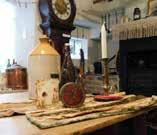

Special events, a Santa’s Grotto, a Naughty Elves children’s trail, and lots of seasonal craft activities that will make this a fun day out for the whole family!
For further information and details of how to book, visit our website: www.oldhousemuseum. org.uk
Book now to avoid disappointment and come to see us in all our festive glory! Merry Christmas!
JOYCE
































Top Tip:
Terracotta pots are not always winter hardy so if you’re not sure, wrap in bubble wrap to stop them cracking.
Also you don’t want plants in containers sitting in water as it will rot the roots so remove any saucers from under the pots and raise off the ground if possible. You can buy little “feet” to do the job, or bricks, stones or wood will work just as well. Even in winter, containers planted with the likes of winter pansies can dry out. But don’t water if it looks like freezing.
Bubble wrap is also handy for helping to insulate greenhouses.
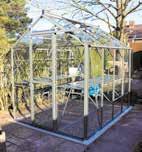
It’s a good time now for pruning fruit trees such as apples and pears as the trees are less likely to bleed and weaken now the sap has retreated down their trunks. The idea is to take out any damaged branches and cut away those which are crossing and rubbing against each other. Ideally you’re looking for a goblet shape so there is good ventilation in the middle of the tree. Shorten growth from this year by a third and go back to a bud facing the direction you want the branch to grow. But don’t prune cherries or plums –leave them for the summer.
And if you’re tempted in this mood of chopping and lopping, to cut back flowering cherry or forsythia, which suddenly look very leggy around now, be aware that you’ll be removing next year’s blossom branches. They really need to be pruned after flowering...
Clear debris, moss and algae from drives, flagstones and patios. Not only can it become slippery, it also breeds fungus and pests.



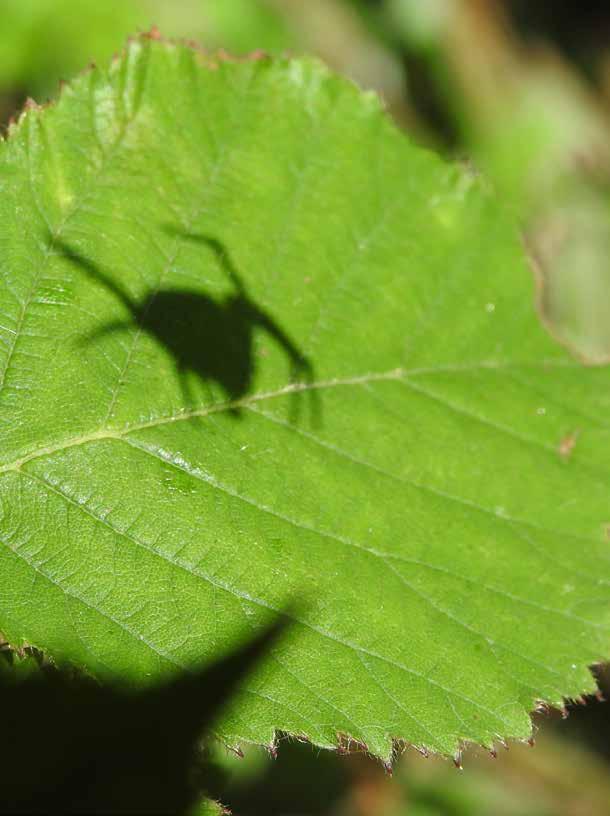

Very few British spiders will bite you, and of those which do, most don’t draw blood. With one possible exception, they are not effectively venomous. The exception I write of is the ‘False Widow’, a species spreading since its arrival into southwest England from the Canary Islands back in the 1800s. This can bite and for some people, it does produce a very nasty toxic shock. Other species are perfectly harmless, and even the big ones such as the ‘Cardinal Spider’ (the really big leggy House Spider) is probably more afraid of you than you should be of it. However, it is very large, and those long legs make it look intimidating. The big, fat-bodied ‘Garden Spiders’ which live in circular orb-webs are totally benign, though I recall a local Junior School being closed because parents thought these big spiders were False Widows. This said, I have had False Widows reported from a local allotment garden where someone had suffered a bad reaction to a bite from a big dark-bodied spider in his shed.
However, not everyone likes spiders and yet with autumn creeping in, there is no getting away from them. Once we are into November, then bushes, hedgerows, and even windows are well covered in spiders’ webs of various shapes and sizes. Not all spiders make webs and some such as Wolf Spiders actively run down their prey. However, of those species which are web-makers there are two main types. These are the ‘blanket’ or ‘sheet webs’, and, as mentioned earlier, the orb webs. Sheet webs are constructed by spiders called the ‘Linyphiidae’ and there are 280 British species from tiny ‘Money Spiders’ said to bring good luck if you find one on you. These
spiders hang around under their webs waiting for dinner to just drop in. Some small Linyphids make sheet webs in depressions on the ground, on low vegetation, or on tree bark. Autumn fog or dew highlights these shimmering webs across hedges, herbaceous plants, and on trees or shrubs.
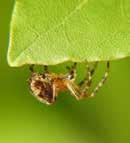

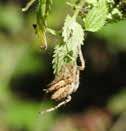
The second big spider group is made up of the ‘orb-web’ spiders, the spider family ‘Araneidae’, and this includes the most common orb (i.e., circular) web builders. These inhabit gardens, hedgerows, fields, and woodlands. They are spiders with eight similar eyes, and eight legs with hairs or spines, and with which incidentally they ‘hear’. The webs are particularly distinctive because they are characteristically constructed to form a framework of non-sticky silk to which the spider adds a final spiral of droplet-covered sticky silk. These webs are natural works of art and engineering and begin with the spider floating a line on air currents to a nearby surface. This first line secured, another dropped from the centre makes ‘Y’ shape, and scaffolding follows. Radii of non-sticky silk are secreted before the final spiral of sticky ‘capture silk’ is in place. These little beasties have specially designed extra claws on each foot to help them manipulate silk whilst they spin and to move across the non-sticky parts of their webs. You often see the big-bodied females with their large spherical abdomens sat at the centre of their web. They are generally much larger than the males. The most handsome of these is the Garden Spider and I used to collect handfuls of these on my way to Junior School where I presented them to our class mistress for the nature table. I’m not sure she was impressed!
Don’t forget to mention Voice Magazines when responding to the Ads


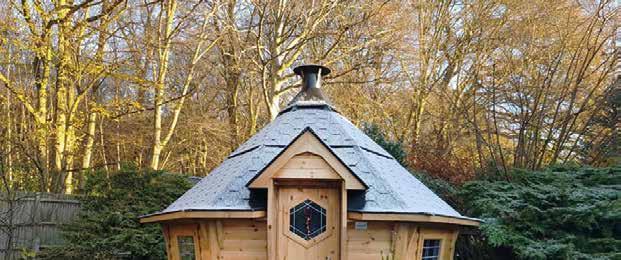




















We’re particularly fortunate at Voice Magazines to get invited to many different events and places but when we were invited to review a foot scanner at Rock Fall by the Managing Director, we were a little surprised! However, I can report that that it was actually one of the most informative, interesting and unexpectedly fun things we have undertaken as a team.
When we arrived, we were greeted by the Factory Shop Manager, Amanda. We received a lovely warm welcome, which continued when we were handed over to the knowledgeable and highly entertaining Dave, who led the demonstration.
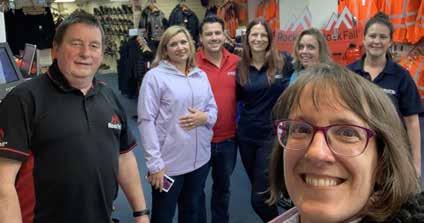
The first part of the presentation was really thought provoking, when asked “Do you suffer from back, hip or knee pain? Everyone one of us answered ‘yes’ to one or all of the above and we were surprised to find out that this could be due to our feet.

We were then each invited to stand on the Activ-Step Foot Scanner machine, which assesses the shape, movement and pressure of your specific feet, to be able to identify the pronation and supination of your feet whilst moving.
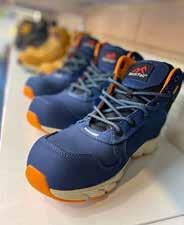
The foot scanner is so clever and it truly is revealing to identify what kind of foot support you need to alleviate some of these issues. Once you have completed your assessment, you are pointed to 1 of the 3 insoles which best suit your particular feet and when you test the samples, you can really feel the difference in foot support.


This particular technology was originally identified as specifically relevant for tradespeople and people who spend all day on their feet, but the reality is that there is no-one that this isn’t relevant to, who currently, or has in the past, suffered from any back, hip or knee pain. And the best news is, currently Rock Fall have an offer on the insoles, which currently rrp at £32, but you can have the assessment and purchase these insoles for £25 when you purchase a new pair of shoes.
Team Voice can unanimously endorse this gem of a shop on the industrial estate in Somercotes. They provide such a warm welcome, have a great range of products and are highly knowledgeable about such an important subject that few people probably have any experience of. So, if you have any issues with your back, hips or knees – support a local business and help improve your walk – you won’t be disappointed.































